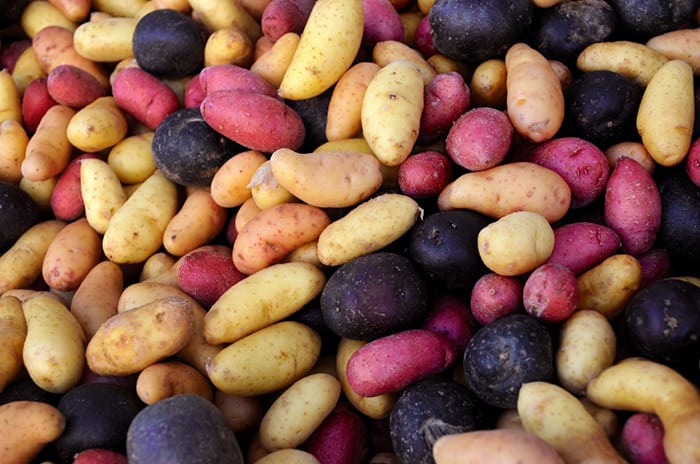Along with the paradigm shift in food worldwide, the consumer is also more open to trying different foods, for example, colored potatoes.
And with this, what was practically confined to the large island of Chiloé, has been expanding and crossing borders, providing attractive and nutritious food for all Chileans. Until not long ago and traditionally, the red-skinned and white-fleshed potato has been used to ensure a firm potato with good culinary aptitude in casseroles and other typical dishes on the national table; However, today the picture has changed.

The current consumer not only looks for different, visually attractive products, but also with a sustainability brand, where the origin takes on a value that adds to its nutritional value and its organoleptic characteristics. That is why the demand for local and / or ancestral products, such as colored potatoes, is growing strongly. In addition, for consumption at home, large sizes of tubers are no longer necessarily required, so for example our potato “chanchera” has come to be called very finely “baby potato” in the northern hemisphere, which is undoubtedly a term far more attractive to the consumer.
RESEARCH
A factor for decision making when buying is emotions, however, many scientific studies show the relevance of diet on human health. That is why the Austral University of Chile, from the Institute of Plant Production and Health, has investigated and studied for years the native potatoes of the Potato Germplasm Bank, located in the Austral Agricultural Experimental Station (EEAA) in Valdivia.
The purpose of these investigations is to characterize the existing genotypes, not only from the technical-agronomic point of view, but also from the point of view of quality, nutrition and the market.
This is how we seek to promote from the UACh, on the one hand, the cultivation and use of Chilean native potatoes, which are largely pigmented with intense purple and pink colors; and that they have a higher content of antioxidant properties and other nutritional and nutraceutical properties that they contribute to the diet of all Chileans. In this context, the project “PAPAS PLUS: nutritious and healthy colored potatoes” (FIC20-39) financed by the Regional Government and its Regional Council is being developed.

In this initiative we work to transfer knowledge to Peasant Family Agriculture (AFC) through the INDAP Los Ríos Region, in order to help small producers to maximize their yields. In addition, to study native potatoes from a nutritional and medicinal point of view with the support of the Faculty of Medicine of the UACh. Likewise, in the FIA project, “Evaluation of improved lines of native potatoes (national phytogenetic heritage) adapted to new conditions of water and thermal stress with a greater commercial value of the product”, directed by Dr. Carolina Lizana, academic of the Institute of Production and Plant Health of the UACh, we are testing a series of crosses of native colored potatoes with commercial varieties.
This with the aim of developing commercial varieties of colored potatoes, which are accessible to the entire Chilean population, to the industry, and which also contribute to the diet. These colorful potatoes have good yields and the quality of a commercial variety, but with intense purple and pink colorations in their flesh.
These projects have allowed a transfer of knowledge to the consumer and the productive environment, mainly to producers and to Farmer Family Agriculture (AFC), but also an opportunity to nourish ourselves with local experience and knowledge that encourage and direct our work.
